"Smart Trucks" and ROI: Advancements in Refuse Fleet Tech
When implementing new technologies, refuse fleets seek enhanced safety and productivity, operational efficiency and the best possible return on investment.
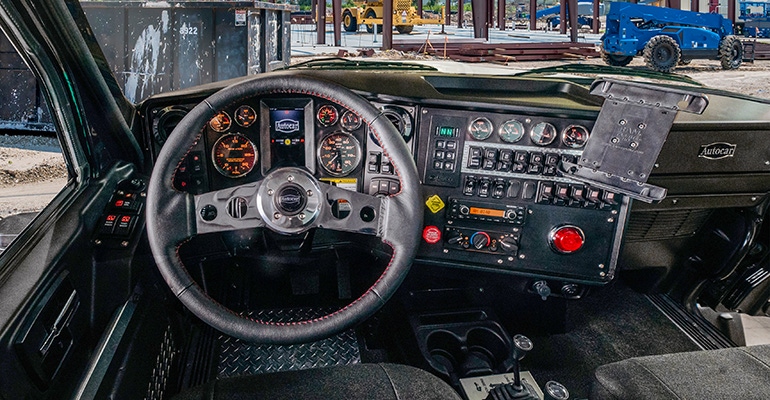
As more and more waste and recycling companies adopt “smart truck” technologies, the industry has seen greater integration of capabilities within and around the refuse truck—think telematics, radio-frequency identification sensors on bins, lift and scale sensors and cameras—as well as integration with back-office systems to streamline operations.
But knowing what technology is right for the specific needs of the solid waste and recycling sector and individual business operations is key. Ultimately, refuse haulers seek solutions that will enhance route productivity, operational efficiency, safety and give them the best possible return on investment (ROI).
Adam Burck, vice president of brand management for Autocar Trucks, explains that much of the newer technologies—autonomous and self-driving trucks, for instance—coming down the pike are more experimental and forward-looking developments being driven by the over-the-road, long-haul truck segment. For now, he doesn’t see a lot of those technologies as appropriate for the more rugged, stop-and-go nature of vocational operations.
Autocar, he says, is instead focused on technologies to improve uptime, make life easier for drivers and mechanics and that are smart investments for refuse fleets buying trucks today.
“We have a huge team of people working on all types of innovations, but we’re not asking our customers to spend money on those unless we’re confident that they are creating value today,” says Burck. “It’s not a criticism of all those developments and it could be that all those developments will come to the refuse market, and that’s what we are working on. But we are not trying to force technology prematurely on our customers.”
Montreal-based FleetMind offers smart truck solutions for the solid waste sector and has seen the industry ramp up its adoption of certain technologies. The company credits itself for coining the term “smart truck” technologies in 2016 and refers to the dynamic of smart truck technologies as “connected mobility,” defined as the real-time integration of onboard computers (OBCs). Mobile connectivity—wireless access to the Internet—integrates OBCs with information systems such as billing, work order management, route optimization and customer care in the back office.
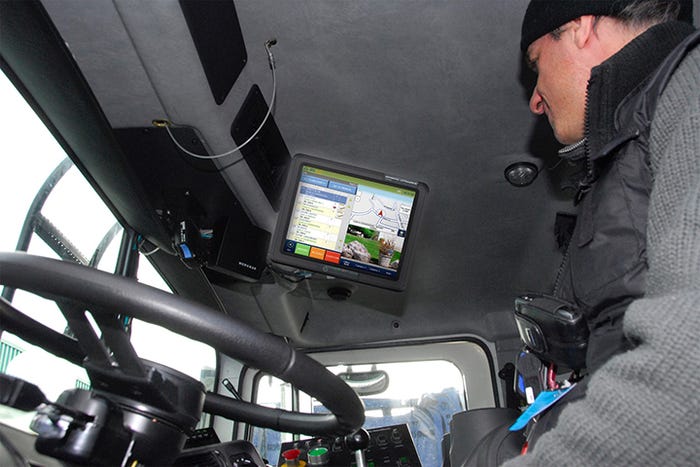
The most widely used technologies right now are those that will help both private haulers and municipal fleets reduce costs while optimizing their overall operations.
Leveraging Technology to Address Industry Challenges
A major challenge that private haulers want to address is fines for missed collections, so they are implementing service verification solutions to prove services were delivered as promised. Fleet management seeks solutions to not only save money on fines but to decrease operating costs that come from optimized routing and the reduction of unnecessary idling, notes Kenneth Trueman, director of product marketing for FleetMind.
Municipalities are also implementing smart city initiatives that rely on technologies like the Internet of Things (IoT) and 5G connectivity to put sensors on more and more assets—from vehicles to bins and beyond—to help aggregate data and provide a complete picture of the city at all times.
Inside the vehicle, FleetMind offers basic camera and digital video recorder systems to full-featured OBCs that integrate with several systems in and around the vehicle, such as the engine control module (ECM), cameras, lifts and scales, among other devices. OBC units provide service verification capabilities with time- and location-stamped records confirmed by GPS and photographic evidence of service provision. From there, Trueman points out, service verification records are automatically sent to the back office for consultation by customer service representatives or dispatchers. Route progress is provided in both table and map views, so supervisors can assign certain routes to their most productive drivers.

“The ability to view and measure how drivers drive their routes and to put the best drivers on the most demanding routes or to give them more stops is paramount to growing route productivity and profitability,” says Trueman. “We have seen cases where fleets have cut as much as 30 minutes per day per route. That enables them to expand their service areas with the same number of trucks or address an existing service area with less vehicles.”
For the back office, haulers can adopt route management, dispatching, fleet management, service verification and mobile video management solutions. FleetMind offers video from up to eight cameras in and around the vehicle that coach driver behaviors as well as support accident investigations.
Safety continues to be a prominent concern across the entire industry. Trucks are now equipped with GPS tracking that can identify harsh braking or cornering and the ability to capture data from the ECM around shifting and performance. Additionally, real-world driver behaviors can be observed, recorded and acted upon via coaching or disciplinary measures.
Assist But Don’t Distract Drivers
Because waste collection drivers have a lot on their plates, in-vehicle technology must be unobtrusive, Trueman emphasizes.
“It has to offer clear calls to action. It has to be perceived to be better and actually be better than the status quo, which is printed route sheets and cards filled out by hand,” he explains. “It has to save steps instead of adding steps. And it has to work. Day in, and day out.”
Furthermore, in-cab cameras and those around the vehicle must automatically provide the right camera views at the right time, adds Trueman.
“The appearance of cameras around the vehicle gives drivers a 360-degree perspective of the vehicle and its immediate environment,” he says. “It should also be possible to choose one or more camera views when navigating through the tight confines of older neighborhoods.”
Autocar Trucks, which designs its systems with refuse in mind, offers larger wraparound windshields and rear quarter windows; wider, deeper steps for workers; more operator space; and better focus and ergonomics on its trucks.
Autocar starts out by obtaining input from a wide range of customers who sit inside a virtual reality truck and has made improvements in elbow room, location of the cupholders, materials, how wide the doors open, etc., based on customer feedback.
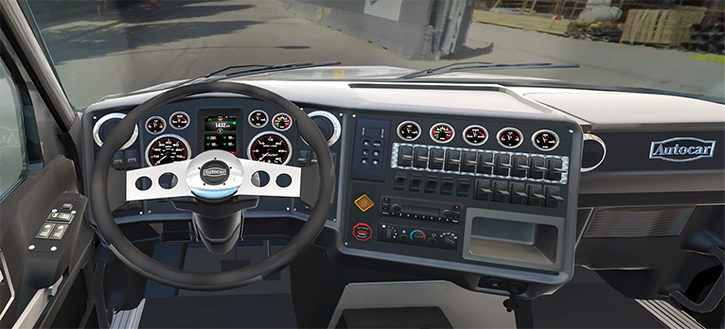
“Then, we hire ergonomics experts to go over the truck,” says Burck. “We’ve had multiple studies and multiple rounds of improvements that were optimized from a 5th percentile woman to a 95th percentile man, and we made the ergonomics for all of them. It was unnecessary 50 years ago because people were different sizes then and women weren’t driving.”
Autocar recently unveiled its Always Up Display and driver information system being built in its ACX and DC-64R trucks. The most notable part of that system is the 7-inch digital display in the middle of the dashboard.
“We know there are many systems that a driver needs to know are operating correctly when operating their trucks,” says Burck. “But if they’re using their eyes to look at all those gauges and lights instead of keeping their eyes on the road and on the task, that’s a safety issue.”
On its ACX, Autocar made it a point to eliminate all instruments that are a potential distraction for vehicle operators except for the legally mandated devices. All the systems of the truck are simultaneously logged with information sent to fleet managers, so they know in real time what’s happening on the truck and whether there is a training/coaching opportunity for the driver.
“The information is transparent for the organization. It will help the driver avoid problems and if there is a bigger problem, that is where sophisticated diagnostics come in,” says Burck. “Not only does the truck continuously monitor itself and not only will it say, ‘here’s the problem I have’ in real, human language—not just code—it will actually tell the team how to fix the problem.”
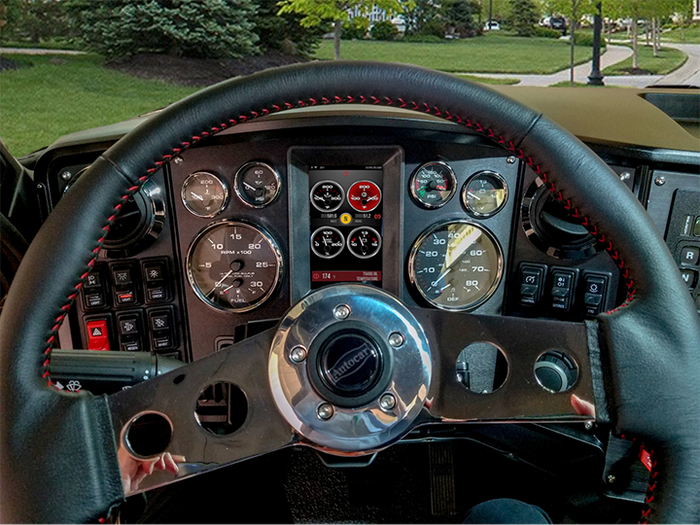
Historically, garbage trucks were built using a more generic refuse spec before they were sent to a dealer or to a body company, which then had to figure out how to mount the body onto the chassis, explains Burck. That could have meant moving the battery, fuel tank or axles, which could change weight distribution, impacting ride and tire adhesion and brake timing.
So, Autocar began engineering trucks for specific bodies and developed what it calls Power of One. Power of One looks at the truck as one complete tool rather than two separate components—the body and chassis.
“We’ll know exactly what happens to that truck, we’ll know exactly what is on that truck and if there are problems down the road, we will be responsible for taking care of it,” says Burck. “We’ve asked the body companies to allow us to install as many components as possible in the main production process. For a Power of One truck, we will do all the installation in the cab—all the harnesses, all the controls, all the screens, all the cameras, everything. So, when that truck leaves our factory, nothing has to be done in the cab.”
In addition, Autocar installs major body components on the frame during the regular production run, so when the chassis gets to the body company, just the body has to be dropped and hoses connected.
“We’ve reduced the production time from two months to four man-hours at the body company,” emphasizes Burck.
Keeping Trucks Up and Running Amid a Labor Shortage
Joe Burkel, Autocar’s chief business development officer, explains that it has become increasingly difficult to recruit qualified technicians as truck systems have become much more complicated than they once were.
Because onboarding technicians who are that technologically savvy is difficult, Autocar developed a technical service center called Autocar Solutions.
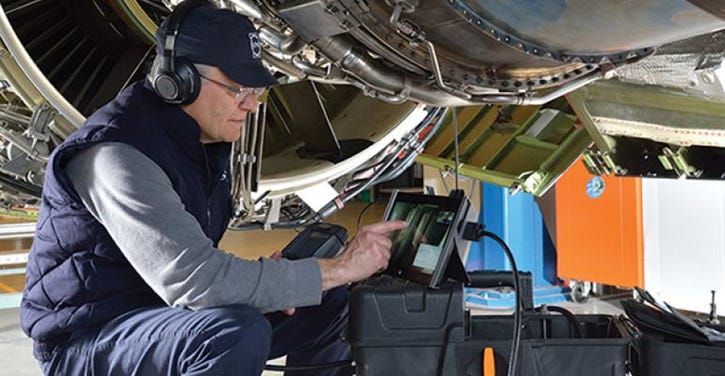
“In the past, it was really done by the phone, where customers would submit a ticket through our website and we would call them back and talk them through troubleshooting and help them figure out the problem. The idea was if you fix it in the shop when you have the problem and don’t have to send it to the dealer, the truck gets back on the road quicker, which is important to everyone.”
Today’s solution, however, allows Autocar technicians to interact with its customers’ technicians through merged reality via smartphones or tablets.
“We can see what they’re doing, and they can see what we’re doing. We found that it leads to a much more productive call and it saves a lot of time,” says Burkel. “It does two things. It not only gets the truck back on the road quicker, it’s also helping technicians become better technicians. We are learning from each other, and we are teaching them a skill and how to follow certain procedures to find the answer systematically.”
Electric (and Autonomous) Refuse Trucks
Turning to electrification has been a strategy for some fleets and municipalities to use clean, green and sustainable technologies for waste collection and processing.
Volvo Trucks North America (VTNA) recently released its VHD and VNR electric truck models suited for roll-off applications and other refuse applications. The VNR model is designed for hard, compact surfaces, while the VHD is designed for any surface.
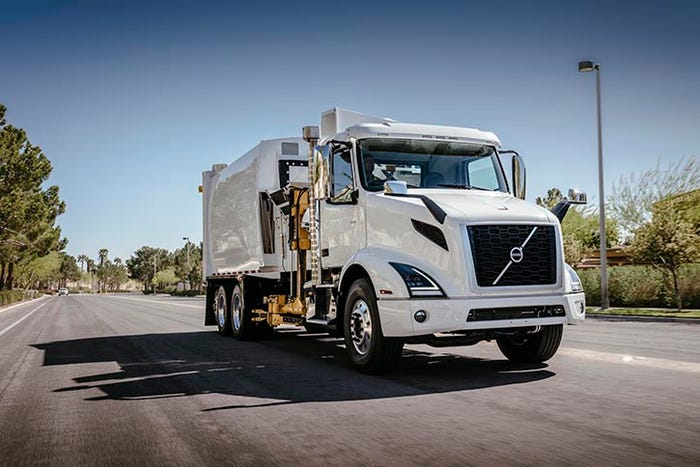
“These models offer exceptional comfort, safety, maneuverability and visibility for the drivers,” says John Felder, product marketing manager for VTNA. “The trucks both offer sophisticated body integration interfaces providing simple integration of complex systems for safe operation.
Brett Pope, VTNA’s director of electric vehicles, points out that an electric driveline will produce less noise compared to a traditional driveline. This should produce a lower background noise for the environment—inside and outside of the truck—ultimately providing a “better work environment and less distractions,” he adds.
Volvo recently partnered with Swedish waste management company Renova to run a test and try to understand how autonomous vehicles can contribute to safer and more efficient refuse handling and a better working environment. The purpose of the test was mainly to investigate how Volvo could make the reversing activities safer, how it could lower the amount of work-related driver injuries and how it could improve the efficiency of the garbage collection.
Volvo designed a truck so the driver can focus on refuse collection and does not have to climb in and out of the cab every time the truck moves to a new bin. The refuse truck used in the test was reversing automatically in a residential development area, continuously monitoring its surroundings and would immediately stop if an obstacle appeared. The truck would be able to drive around the obstacle when that was possible to continue its mission together with a “walking driver.”
“A lot of research and development remains before self-driving autonomous refuse trucks will become a reality, but without a doubt, refuse solutions with varying degrees of automated functions will be part of our future,” explains Johan Larsson, director of autonomous solutions for VTNA.
More to Come
Technologies like artificial intelligence (AI), advanced data analytics and IoT will continue to become more sophisticated and will have an impact in the future.
AI technologies, such as computer vision, machine learning and neural networks, use computer vision not only to measure whether a container is full or not but to analyze the contents of a container remotely. AI aims to help solid waste haulers better identify contaminated waste in real time and enable them to charge accordingly. It also promises to help in the area of safety, such as real-time pedestrian detection systems.

“Leveraging the vast number of events generated by engine control modules in vehicles, it will be possible using machine learning—which is a fancy way of making sense of data and finding patterns—to predict adverse events such as equipment breakdowns,” explains FleetMind’s Trueman. “The ability to perform preventative maintenance at the time that it is most likely to prove effective promises to reduce breakdowns during operating hours, keeping more vehicles on the road where they can be generating revenues.”
While AI technologies for solid waste haulers are just starting to roll out, they will also make it possible to perform advanced analytics on operating data, such as the volume of tips, vehicle miles travelled, engine operating hours and other data points, to identify both new sources of value as well as drags on profitability.
Looking out even further, there could be a particularly important role for “big data,” specifically when it comes to analytics. By potentially aggregating data across multiple FleetMind customers, Trueman explains, data will be used to identify efficiencies in vehicle operations, route configurations, etc. And, at the end of the day, using actionable insight to predict route progress earlier the day before could keep future operations from falling behind.
About the Author
You May Also Like




